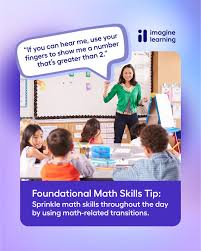Imagine Learning: A Spark That Ignites the Mind
In a small village tucked away between mountains and rivers, lived a boy named Aryan. He wasn’t the top student in his class. In fact, most days, he struggled just to keep up. Numbers confused him, history felt dry, and reading aloud made his hands sweat. But there was one thing Aryan had that no one could see—he could imagine. He imagined stories, colors, and questions that went beyond the textbook.
One afternoon, something changed. His teacher, Mrs. Rao, introduced a new way of learning. “Let’s try something different today,” she said with a smile. “Let’s imagine learning, not just memorize it.”
Aryan blinked. Imagine learning? he thought. What did that even mean?
That day, everything shifted.
A New Way of Seeing the World
Instead of just reading a chapter on volcanoes, Mrs. Rao asked the students to close their eyes. “Now,” she said, “imagine you are standing near a volcano. What do you see? What do you feel?”
The classroom was quiet, except for the hum of minds at work. Aryan felt heat on his face. He saw the sky filled with ash. He heard the rumble deep in the earth. And when he opened his eyes, the lesson was no longer something in a book—it was a memory, vivid and real.
This wasn’t just learning. This was experiencing.
The Science Behind Imagine Learning
What Aryan didn’t know was that his brain was doing something powerful. Neuroscience shows that when we imagine a scene vividly, the brain lights up almost the same way it does when we actually live it. This makes the information stick. Kids remember more, understand deeper, and engage longer when their imagination is involved.
Imagine learning isn’t a trick or a trend—it’s a tool. One that helps turn hard subjects into exciting stories.
When Learning Becomes a Story
Math became a space adventure. Aryan and his classmates imagined flying in a ship across number planets, solving puzzles to unlock each one. History turned into a time-travel journey. They stepped into the shoes of freedom fighters and ancient kings, feeling their choices and struggles.
Even grammar became fun. Aryan wrote letters to imaginary creatures, learning sentence structure without even noticing.
The class began to change. The quiet kids spoke up. The bored kids leaned forward. And Aryan—he started to smile in school again.
The Power of “Imagine Learning” in Education
Too often, schools focus on tests and grades, not wonder or curiosity. But imagine learning reminds us that real understanding begins when a child feels the lesson—not just hears it.
This approach helps in many ways:
-
Better memory: Students retain more when they visualize concepts.
-
Higher engagement: Lessons feel like play, not pressure.
-
Creativity boost: Children learn to think in new ways.
-
Emotional connection: They care about what they learn, not just pass the exam.
More than facts, students carry meaning with them.
Aryan’s Turnaround
Months passed, and Aryan was no longer the boy who sat quietly at the back. He started helping his classmates. He raised his hand. His reading got better, and his ideas got sharper.
One day, he stood up in front of the class to give a short speech. “I used to think I couldn’t learn,” he said. “But then I learned to imagine. And that made everything possible.”
There wasn’t a dry eye in the room.
A Movement, Not Just a Method
Imagine learning isn’t about fancy tools or expensive programs. It’s about mindset. Teachers, parents, and schools can all bring imagination into learning—through storytelling, games, drawings, or even simple questions like “What if?”
It works in rural schools with no tech, and it works in big city classrooms. It works for kids who struggle, and for those who already excel. Because imagination is free—and it belongs to every child.
Simple Steps to Start Imagine Learning at Home
You don’t need to be a teacher to use this idea. Here’s how parents can help:
-
Tell stories instead of giving answers: If a child asks why the sun sets, turn it into a tale of the sun going to sleep.
-
Use “what if” questions: What if animals could talk? What if water had feelings?
-
Draw it out: Let them sketch what they learn.
-
Act it out: Role-play science, history, or even math problems.
-
Let them lead: Ask your child to explain things their way—you’ll be surprised how smart and creative they are.
conclusion
Today, Aryan dreams of becoming a teacher. He wants to help other children feel what he once felt—lost, and then found. All because one teacher told him to imagine learning.
The truth is, the world is changing fast. We don’t need kids who just remember facts—we need kids who can think, dream, and solve. Kids who feel learning as something alive and personal.
And maybe, just maybe, it all begins with three simple words:







